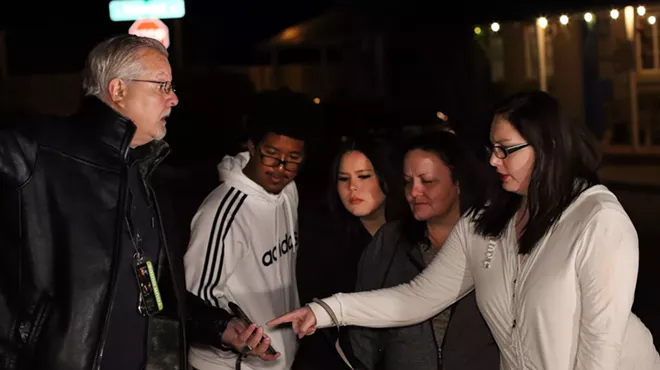Thursday, March 13, 2014
Word Odyssey: With this Ring I Do Thee Wed

- Image courtesy of Shutterstock
George Bernard Shaw once said about marriage: "When two people are under the influence of the most violent, most insane, most delusive, and most transient of passions, they are required to swear that they will remain in that excited, abnormal, and exhausting condition until death do them part."
This weekend my friends Corby and Andrea will so swear, and I have the privilege of solemnizing the marriage. I’d never heard of solemnize until I was called upon to do it, but as it happens, in Arizona that’s the official legal term for the role usually performed by a preacher or a justice of the peace: to render the ceremony serious, somber and dignified. I’ll give it a whirl.
That excited, abnormal and exhausting condition is usually sparked by courting, which has a very humble origin. Court came into English from French, which got it from Latin, and in Latin it meant farmyard. Well, it meant any enclosed yard, including a farmyard, and also came to mean a courtyard. That’s where the King gathered his counselors and heard petitions from his subjects—i.e., where he held court. The word courting is a love child of the romance literature of the 1500’s, in which noble tales of romantic chivalry, especially wooing women, occurred in the King’s court. This gave us courting. Not incidentally, it also gave rise to courtesan. Curtsy comes from courtesy, an earlier word also evolved from court. Apparently a courtyard was a multi-purpose room because, reflecting the same ancient etymology, tennis, basketball and other games are played on an enclosed rectangular surface called a court. But I’m getting off subject.
Back to it, the man who does the courting is a suitor, which is from French with a Latin root “sequi”, meaning to follow. In cards, when you play the king of hearts after the queen of hearts you follow suit. In a lawsuit, a person follows another with the law. In amorous affairs, a man follows a woman with his love, also possibly resulting in a lawsuit if his advances are unwanted and he is viewed as a stalker, but otherwise he is a suitor. Suit also came to refer to the matching outfits worn by court attendants, who were the amorous suitors in Romance literature.
If the suitor’s courting is successful, his girl might become a bride, which is an ancient Germanic word, and bears no relationship to bridle. But of course it is related to bridal, as in the customary pre-wedding celebration in which the bride is showered with gifts. Bridal has a curious origin. It is shortened from the original bride’s ale, which was a reference to the beverage served at the wedding feast, and later came to be synonymous with the feast itself. In some old English traditions the prospective bride would be given ale-making paraphernalia, which she would use to make ale for the wedding. Hence: the bride’s ale.
Newlyweds customarily take a honeymoon. This seems like an odd coupling of words but makes perfect sense in historical context. Going back to ancient Rome, and many other cultures, honey was believed to be an aphrodisiac. So, after saying their vows, it would be natural for the happy couple to whet their romantic appetites by indulging in that golden nectar of the gods. Moon refers to the post-nuptial grace period in which the couple can expect to remain in the excited, abnormal, and exhausting condition of intoxicating love—about the cycle of the moon.
I’ll close with a toast. In the old days in England, toast was not simply parched sliced bread, it was also spiced. Gentlemen would drop the spiced toast into their wine to flavor it, then quaff the wine in honor of a beautiful woman. She, of course, became the toast of the town.
So here’s a toast to the exquisite bride Andrea, and also to her honey, Corby, the worthy groom.
Tags: word origins , word odyssey , word history , britt hanson , Etymology









